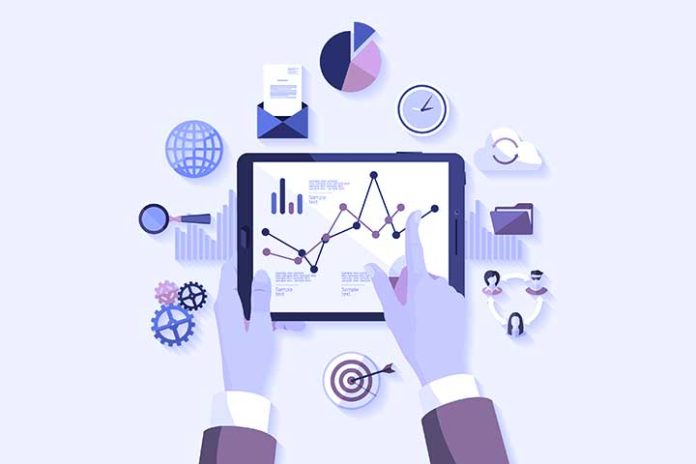Anyone who has already read part 1 of our little series already knows what we are talking about here. In the following, we present online marketing instruments that essentially all pursue the same goal: loud drumming – and thus bring traffic to your own website!
Online marketing instruments: tools for addressing customers
All of the online marketing tools shown below essentially follow the same simple scheme of action:
Step 1: Addressing the target group as precisely as possible (targeting)
In online marketing, “waste coverage” is a very unpopular term. Fortunately, successes and failures of individual measures can be measured very well, especially in the online area. The goal is always: it is best to only address people who are “very likely” to be interested in your offer. Example: Do not just send your invitation e-mails for your next “party” to everyone according to the watering can principle, but only to people who probably like to party.
But how do you know who is particularly “receptive” to your invitation (your offer)?
Strictly speaking, of course, they don’t know. Rather, they draw certain conclusions, for example based on previous behavior, for example: “Who has already bought a party ticket somewhere online in the last 12 months?” or “Who frequents certain party websites?”. Of course, it’s best if you don’t have to fall back on someone else’s data, but can use your own “real” data – eg: “Who has been to a party at my place before? If you combine such information with other filter criteria, such as “age” or “relationship status” (single?), you quickly get a very good “hit probability” for potential partygoers.
Step 2: Forwarding to your own website
Once the recipient of your advertising message has “taken the bait” (meaning: he wants to learn more about it), you will usually forward him to your own website/landing page with the help of a link. Here he will find out all the details and ideally he can also accept your offer right away…
Step 3: Conversion
On your website / landing page, the visitor should now carry out specific target actions – so-called “conversions”. A conversion is generally an action by the visitor that is useful to you. This can be, for example: a phone call to you, a newsletter registration or the sending of a contact or inquiry form – or of course a purchase in your online shop.
At this point I would like to point out again: Your company website is the focus! All measures usually serve the purpose of guiding qualified visitors there. So your website is the center of attention. All other measures are usually just satellites circling around your website.
Also Read: 7 Tools For Efficient Back Office Operations
Briefly explained: The most important tools in online marketing
Email Marketing / Newsletter Marketing
Excellent and often underestimated tool for addressing new and existing customers. With a personalized and target group-specific newsletter, for example, customers who have already bought a certain product or service can be specifically addressed. Link: https://www.gruenderszene.de/lexikon/terme/e-mail-marketing
Social media (marketing)
Includes strategies for using social media in order to get in direct contact (dialogue) with customers, employees or target groups. Good tool for spreading a brand message (branding). The topic of “social media advertising” (i.e. paid advertising on Facebook & Co.) is becoming increasingly important. In this case, the objective is much more performance-oriented.
Cooperations
This means the targeted placement of content and advertising messages on the websites of suitable cooperation partners. Often based on reciprocity. On a gardener’s website, for example, the offer of a supplier of swimming pool supplies can be quite appropriate and sensible. Especially in the local SME sector, cooperation at this level can be very successful.
Banners/display advertising
Placement of advertising banners on thematically appropriate websites and portals. Programmatic advertising is being used more and more frequently. This means that the website visitor is not shown any random advertising banner, but one that is as suitable as possible for him. Example: “Remarketing” from Google. The visitor suddenly gets to see more and more advertising banners for products whose websites he had previously visited.
This form of advertising is particularly strong in the dissemination of brand messages (branding) and in the introduction of new, previously unknown products or services.
Keyword-based advertising / search advertising (SEA)
Very strong and effective advertising opportunity when customers are actively looking for a specific solution! Classic example: Google AdWords. Here, an advertisement is only displayed if the customer’s search term matches it. A detailed description of this form of advertising can be found here: Be found easily with Google AdWords … Also worth reading: The Google deal…
Affiliate marketing
A website operator receives a previously defined commission for each forwarding of customers to a sales partner. Amazon, for example, is very successful with this model.
Search Engine Optimization (SEO)
Strictly speaking, this is not a classic online marketing tool, but rather a “must have” in the online sector. Being easy to find is an important objective for almost all companies. This applies to both large corporations and SMEs in the local area.
Also Read: 8 Tech Tools For Outbound Marketing Success

